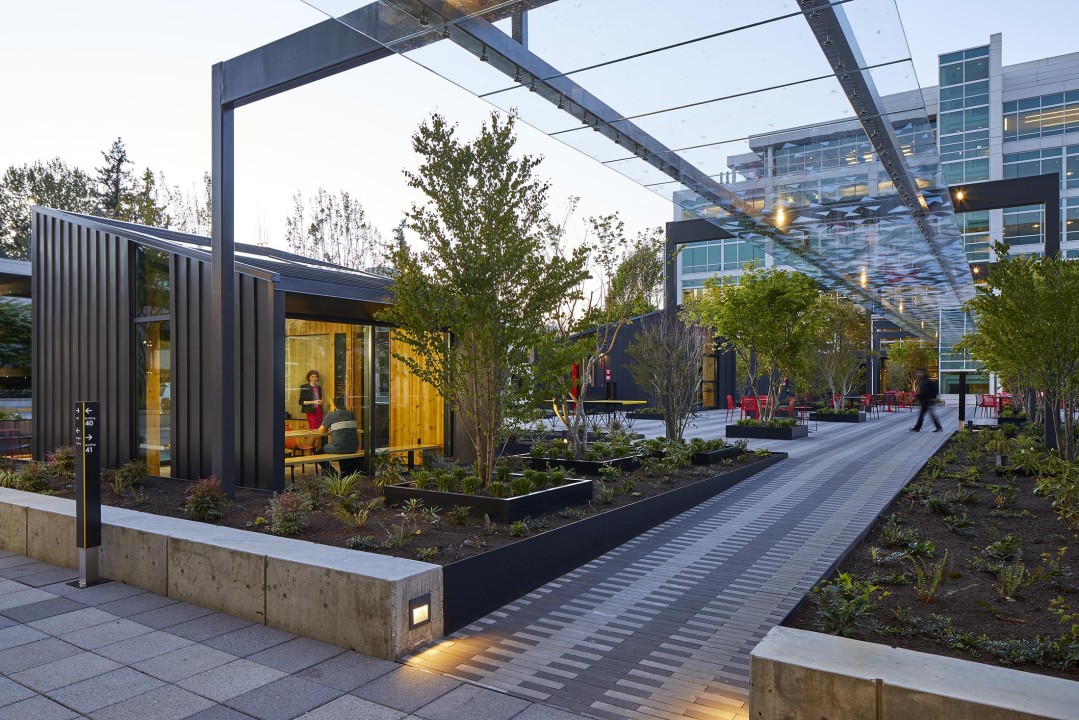
Accessible Workplace at Microsoft
10/24/2019
Earlier this year I wrote in this space about Microsoft’s commitment to workplaces that are accessible to all employees, vendors, and customers. Inclusion lies at the heart of the mission Microsoft CEO Satya Nadella introduced five years ago: To empower every individual to do more and achieve more. Everyone should feel as empowered to use Microsoft facilities as they do our technology.
To that end, we take pride in designing our work environments to enable more people more of the time: people who use wheelchairs, people with low vision, hearing loss, and other disabilities. In order to do this, we have worked to identify areas where increased ease-of-use can make a difference. We have gathered our best practices for creating these accessible environments into a living document, available online to any organization looking to create accessible work environments beyond the basic code requirements.
Introducing the Microsoft Accessible Workplace Handbook http://aka.ms/InclusiveWorkplaceHandbook
The handbook takes the reader through the Microsoft standards for accessibility. This includes the arrival experience, which can feature an entry desk with not only a lowered surface, but also an opening beneath for the ability to wheel in and face the host, as people do when approaching a desk. Stair landings can be designed with a change in tactile surface at the top and a contrasting outer edge on each stair, to help everyone recognize steps. Automatic door openers are commonly found at main entries, but they can also be installed at other key entries in a building, like restrooms and cafes. Companies build an accessible stall in a restroom per code, but they should also consider the main restroom door, which a person in a wheelchair typically cannot push open without assistance.
Many of the new standards cost nothing extra, they just require thoughtful design. New construction, for instance, allows a company to build in accessibility features from the beginning. It costs the same to mount a faucet on the side of a sink, where it is reachable by all, as to mount it in back, where it is reachable only by some.
The handbook was conceived three years ago when we recognized that Microsoft wasn’t in a position to attract the very best talent if those talented employees couldn’t access our sites or effectively use them once there. Microsoft’s properties in North America have always been fully compliant with the Americans with Disabilities Act (ADA) requirements, but what might be done to go beyond those requirements to make them even more accessible? What might be done to create more accessible experiences in all our global properties, even those in countries with less stringent accessibility codes?
We got right to work. As a leader in workplace design, I manage the experience of our workplace environments, including designing for people with disabilities. But I myself don’t live these issues. It became clear that in order to assess what the most impactful improvements could be, I needed a community of people with disabilities to call on.
So we convened an advisory group, consisting both of individuals from within Microsoft and outside, all of whom have disabilities. The goal? To learn what elements we could incorporate into our design to affect the greatest numbers of people. We first acknowledged that not all disabilities are permanent. Think a broken arm, back trouble, or injuries involving crutches or scooters. And over 70% of disabilities are invisible. And that’s fine! All it means is we’ll be helping many more people than we’ll ever know. We will continue to make special accommodations for unique challenges, but meanwhile we can help a lot of people in more ways.
Once we had our accessible environments, we invited advisory group members to test-drive their functionality. We invited one who uses a wheelchair to The Hive, Microsoft’s workplace lab for testing new design concepts. We used cardboard walls and surfaces to mock up a small conference room and check accessibility of the current standard. This process quickly yielded the valuable information we needed to make changes: that chairs in the room should be light and on wheels so they can easily be pushed aside, and that the table’s power outlets should be centered, for easy reach. An extension of the whiteboard surface makes more writing room for someone seated, yet doesn’t exclude a tall person accessing the board.
You can find these tips and more in the Microsoft Accessible Workplace Handbook, which we’ve made available http://aka.ms/InclusiveWorkplaceHandbook for any organization to download and use. Why? Because sharing what we’ve learned is yet another way we can further Microsoft’s mission to empower every individual to achieve more. It is also a living document, because we know that accessibility is an area where there is always more to be learned. The handbook has evolved as our understandings have evolved, and it will continue to do so as we grow in our experience of what makes a workplace work for everyone.

UX/UI Designer | Passionate Problem-Solver | Creative and Analytical Thinker | Versatile Experience in Marketing, Research, and Leadership
4yPhi-Hai Nguyen
Studio Pacifica: principal, architect, accessibility consultant, policy advocate for persons with disabilities
4yVery perceptive and well written, Martha. Kudos!
Independent Real Estate advisor.Workplace specialist .Strategic planner.
4yGlobally Microsoft is driving the Initiative am sure all will learn.
Finance Professional
4yThis is great and I hope it becomes a model for other large companies. Microsoft should encourage the companies they use or partner with to follow these changes. Nice to see a company understand someone who is disabled, shouldn't have to ask to have common areas accessible and useable by all.
Associate Producer
4yThis is great work and something I'd love to see across more companies in the games industry.